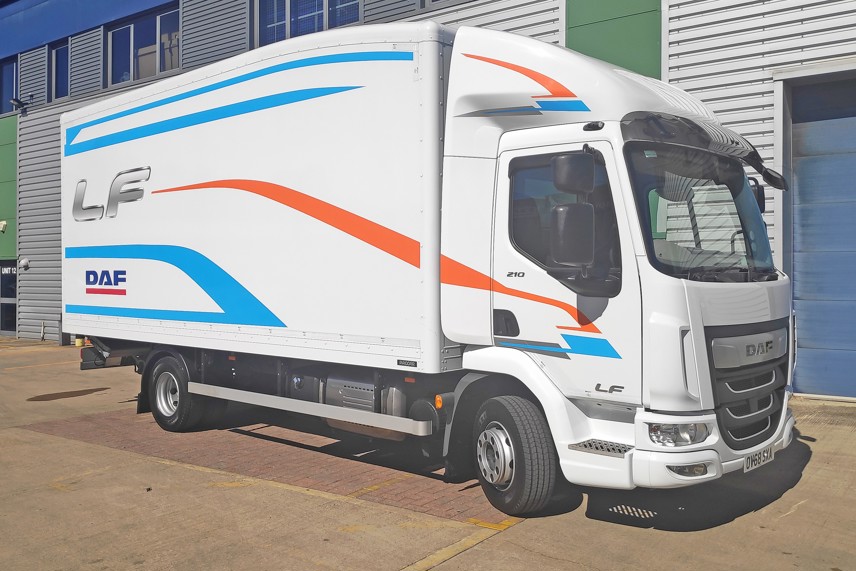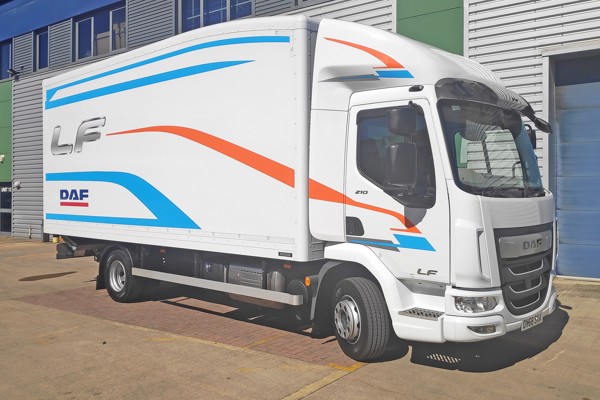Review
If there’s an area of the UK truck market that has seen a major change over the past few years (other than the multi-wheelers), it has to be the lower end of the two-axle rigids.
For years, we have been talking about the migration of 7.5-tonne operators into either the light commercial vehicle sector or moving up into the heavier 4x2 rigid market.
Perhaps what has passed many people by has been the way in which the 7.5-tonne sector has itself morphed into ways of keeping its customer base happy. By that I mean there are now two types of 7.5-tonne vehicles, the European-based ones offering a more traditional approach to driver comfort and payload and the Asian-based products where being lightweight is key.
It could be argued this latter approach has kept many 7.5-tonne users with this solution as it offers more payload while staying within the same gross vehicle weight (gvw), and without this many would have fled the sector going up the gvw scale long ago.
But with the driver licence changes taking place many years back the move away from 7.5-tonne is only just coming to fruition and thus many are looking to move up the scale – and that’s were the Daf LF 12-tonner makes its case.
Daf offers the Paccar-built Euro 6 five-litre PX-5 with power ratings of 187PS and 216PS and torque outputs of 750Nm @ 1,100-1,600rpm and 850 Nm @ 1,200-1,500 rpm respectively. Also available is the larger seven litre PX-7 with power ratings of 237PS and 268PS and torque outputs of 900Nm @ 1,000-1,700rpm and 1,000Nm @ 1,000-17,00rpm respectively.
Providing the transmission to the rear axle is a choice of a manual six-speed gearbox with an overdrive sixth gear or an AsTronic six-speed automated gearbox, with a five-speed automatic also available for special operations.
In day cab form, DAF offers the 12-tonne LF in 12 wheelbases ranging from the tipper style 3.05m to a distribution-friendly 6.7m. There are two fewer available on the sleeper cab which unexpectedly misses out the shorter wheelbases.
These wheelbases equate to the ability to carry a body length of between 4,520mm and 10,880mm on the day cabs and 4,800mm to 10,630mm on the sleeper cab versions.
The front axle has a plated weight of 4,480kgs and the rear 8,480kgs both on parabolic springs with air suspension an option, this means at 12,000kg gvw there’s a load latitude of just less than a tonne.
Of course, the real numbers matter when it comes to the chassis kerbweight and payload, and this is where a 12-tonne truck comes into its own compared with a 7.5-tonner with the same requirement for driver licence and also very similar total cost of ownership.
At its best, meaning the shortest wheelbase day cab, the body and payload potential is 8,319kgs, and even in its worse case with the longest wheelbase and a sleeper cab you are almost at eight tonnes, 7,932kgs.
Reflecting the latest technology advances, the LF has lane departure warning as standard as well as vehicle stability control, with adaptive cruise control including forward collision Alert is an option. Braking is firstly provided by a single stage exhaust brake and then the service brakes featuring disc brakes all round.
In most cases, the 12-tonne LF will feature a 2,130mm wide day cab, with a steel bumper, halogen lights and a lower window in the offside cab door. Inside there’s a mechanically adjustable steering column, electric windows and mirrors with an air suspended driver seat and fixed co-driver seat as standard.
There’s a plethora of options available including air conditioning, a lower bunk, auxiliary cab heater as well as a roof hatch with either manual or electric control to name but a few.
For our road test, we had the mid-range Paccar PX-5 engine rated at 216PS (LF210) matched to the non-cost option AsTronic six-speed automated gearbox and a 6.1m Paccar Aerobody-built GRP box van body complete with wind deflector kit.
Approaching the 12-tonner, you become aware that this vehicle looks almost identical to its 7.5-tonne cousin. It’s the same footprint, and, just as importantly for an urban distribution truck, it has virtually identical in cab entry height.
This means getting into the cab is just a case of opening the door and climbing one low step and you’re sitting on the drivers standard air suspended seat.
Perhaps one small trade off for this low cab entry is the fact that inside the cab there is an engine tunnel, which in some operations may be a ‘deal breaker’ although it isn’t as pronounced as some others I have seen.
The dashboard is almost flat with a slight nod towards a semi-wrap round style, the instrument panel features two large round dials with the speed on the left and rev counter on the right, this also features a green section helping the driver to ensure they drive in the most economical manner, there’s also the eco support software if that fails !
In the centre of the instrument panel is a LCD screen offering the driver dynamic information on their journey as well as outside temperature etc. The steering wheel has buttons for the cruise / maximum speed control, mobile interaction, LCD screen control as well exhaust brake.
To the left side of the driver are a series of switches for can central locking etc, and a three rotary dials for the heating / ventilation, there’s also a screen for the sat-nav system underneath the switches.
It doesn’t take long to settle down into the air suspended seat and switching on the 216PS engine brings a relatively quiet response and reaching to the left side to release the park brake brings a good response from the truck.
Visibility is good on the LF cab helped by a lower window in the offside door and because we are reasonably low down, driving in an urban environment as we did on our test route, it created a very comfortable driving style.
With the lightweight 12-tonne LF, DAF have created a compelling argument for utilising the opportunities afforded to UK operators with the driver licencing changes as is the norm on the continent. It’s difficult to argue with more than double payload potential matched to similar total life costs to a 7.5-tonner, it would appear just tradition that stops it.

















